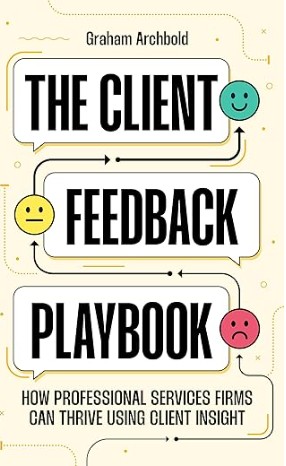
I recently had the pleasure of leading an intensive half day digital workshop on “Marketing and Business Development Planning in a Nutshell” for the Professional Marketing Forum. The poll results and discussion points are shown below for the delegates who represented firms in law, accountancy, engineering and economics consultancy from locations as diverse as Exeter, Bristol, Newcastle upon Tyne, Leeds, Sheffield, Glasgow, Chelmsford, Peterborough, Bedford and London. Key themes emerging were: a lack of understanding of the benefits of M&BD plans, the challenges of conducting marketing audits and difficulties in setting goals. So here’s Marketing and Business Development Planning in a Nutshell: Benefits, Audits and Goals.
Lack of understanding of the benefits of M&BD planning
In many firms, M&BD are still expected to react to fee-earner requests for marketing and business development support. Many firms are still undergoing the transition to a point where M&BD provide proactive and strategic support for planning effective M&BD action.
We staged a lively debate about the pros and cons of M&BD plans from the point of view of marketers and fee-earners:
Benefits of M&BD planning:
- Enables us to be proactive in anticipating market and client needs
- Ensures a client-centred approach dominates
- Assesses goals and strategies against the external reality – including competitive action
- Challenges previous ways of doing things
- Provides an evidence-based approach to recommended strategies and actions
- Guards against expensive and ineffective tactical and ad-hoc activities
- Allows time to step back and review the data to support better decisions
- Breaks down what needs to be done to achieve the aims
- Co-ordinates efforts across relevant teams
- Promotes engagement and buy-in across the team
- Saves time and is more effective in achieving results
Reasons against M&BD planning:
- Have managed and succeeded for many years without M&BD plans
- Planning takes too much time and energy
- There is insufficient data
- Fee-earners just want to organise an event for their news/service
- Many practice groups focus on selling and relationships and see little role for marketing (the lack of marketing and sales integration is discussed here)
- Market volatility means things are changing too fast to plan
- We must be prepared to respond to market and client changes immediately
- Fee-earners work “at the coal face” and know more about markets and clients than M&BD professionals
- Fee-earners are already at maximum capacity and don’t need further clients/work
- It’s the job of the M&BD team to know what to do – fee-earners don’t need to be involved
We considered the role of M&BD professionals in engaging fee-earners in the debate and educating them about the benefits of M&BD planning and campaigns. This article considers the benefits of a campaign approach further.
Challenges in conducting marketing audits
The starting point for any marketing and business development planning is an audit to collect and review data about the external (near and far) environment and the internal situation. However, conducting a marketing audit is not without its challenges. Some of the issues highlighted included:
- Quality of data – Many firms do not collect the information that is required about the source of work and/or about the detailed nature of clients and the services they purchase. Sometimes this is a system issue but often it is a behaviour issue – people simply don’t enter the required data into the systems. Obtaining information about markets, clients and competitors can be expensive and time-consuming.
- Time pressures – It takes time – for fee-earners, for marketers and others in the firm who need to provide data (e.g. finance team, market analysts) – to conduct an audit. Fee-earners are often impatient to get to action and decline to devote time to analysis and planning.
- Lack of internal buy-in – Where firms and fee-earners do not understand the purpose and benefits of the marketing and BD planning process they may be reluctant to get involved and devote the necessary time and thinking. Marketers have an education role here – to demonstrate how the M&BD planning process delivers benefits and results.
- Inertia – Sometimes fee-earners have been doing the same thing (e.g. an annual event) for years and are reluctant to challenge or change what they have done. They regard the activity as successful and see no reason to change.
- Silo internal structures – A market-facing approach requires practice groups to work together where often the reward structure operates against this. There can be a culture of client protectionism and a lack of information sharing and collaboration. Sometimes, regional or territory teams do not co-ordinate with sector and service line initiatives.
This article on marketing planning in a nutshell explores marketing audits further.
Difficulty in setting goals
Once the audit is conducted, you need to set SMART objectives so that you know what you want to achieve, can select the appropriate strategies and tactics and can measure progress and results. However, it is hard to set goals for a number of reasons:
- Lack of data – Without data showing the current situation, it is hard to set baselines against which progress and success can be measured.
- Fee targets dominate – Most firms measure performance on the basis of fees. Profit information can be hard to obtain. And with fee-earners being measured on revenue, it can be hard to identify intermediate and other measures of success (e.g. market share, profile, reputation, referrer relationships, share of client, profitability, size of transaction, strategic wins, recoverability etc).
- Different types of goals – There are many layers and types of goals – from detailed digital marketing metrics (e.g. web site visits, social media engagement, email openings etc) through to network expansion, strength of relationships, brand recognition, referral flows, cross-selling, client satisfaction, market penetration and key client development. These can be difficult to align and plan.
- Cultural resistance to targets – The professions are typically risk averse. There is sometimes a reluctance to set goals when there is the possibility that goals may not be achieved.
- Long sales cycle – Often in B2B marketing the sales cycles are long, sometimes spanning numerous financial years. And as there are multiple touch points during the sales cycle it is hard to attribute success to the marketing and business development process as fee-earners may claim it is their efforts at relationship management that drive success.
- Market volatility – Things are changing too fast to commit to specific goals.
- Return on Investment (ROI) – Traditional measures of success – such as Return on Investment – can be extremely hard to calculate in professional services firms due to a variety of cost, investment, life cycle and attribution issues.
This article on marketing planning in a nutshell looks at simple and sophisticated M&BD planning frameworks.
We discussed guidance on how to introduce a marketing planning process into a professional services firm.
Poll Results and Discussions
During the workshop there were polls for delegates to compare their views.
Poll: Are you qualified in marketing?
- 22% Yes
- 78% No
Poll: How much experience do you have in marketing/BD?
- 22% Hardly any
- 0% A little
- 56% About average
- 22% A lot
- 0% A huge amount
Poll: Where is the focus of your planning?
- 60% Marketing
- 0% Selling
- 0% Existing client development
- 10% Referrer management
- 30% All of them (Business Development)
Poll: Which is the main segmentation approach used by your firm?
- 50% Industry or sector
- 0% Size of business
- 0% Size of project/transaction
- 0% Ownership/structure of business
- 0% Geography/Territory
- 0% Nature of decision-making (centralised/de-centralised)
- 0% Nature of buyer (Technical/Commercial)
- 50% Relationship (Existing/Referrer/New)
- 0% Needs or issues based
Poll: To produce your M&BD plan do you have access to:
- 30% Business plan
- 20% Sector plan
- 10% Department or Service Line or Team plan
- 10% Territory plan
- 60% None of these
Poll: Having considered the key elements of plans, how well would you rate the M&BD plans at your firm
- 11% Very poor
- 22% Poor
- 33% Average
- 22% Good
- 11% Very good
Poll: What do you see as the biggest M&BD planning challenge at your firm?
- 0% Structure – Silos
- 11% Culture – Reward systems/Client protectionism
- 11% Culture – Short termism
- 0% Knowledge – Financial, market and client information
- 44% Engagement – “Too busy”
- 22% Engagement – Too many (new initiatives)
- 0% Engagement – Perception of M&BD
- 11% Other
Summary/Key thoughts from the session
- Build relationships with fee-earners by learning about their markets and practices
- Communication is key – ensure people know what you are doing and why
- Be aware of the challenges that may arise during the planning process
- Take a step back and question or challenge things when planning
- Shift from reacting to tactical request to driving strategic thinking
- Get buy in for the plan at the outset – involve fee-earners in plan development
- Sell the benefits of M&BD planning (save time, increase effectiveness, better results etc)
- Set a plan with clear objectives
- Develop high level marketing plans to develop the BD capabilities of our partners
- Demonstrate noticeable changes and results from planning process








